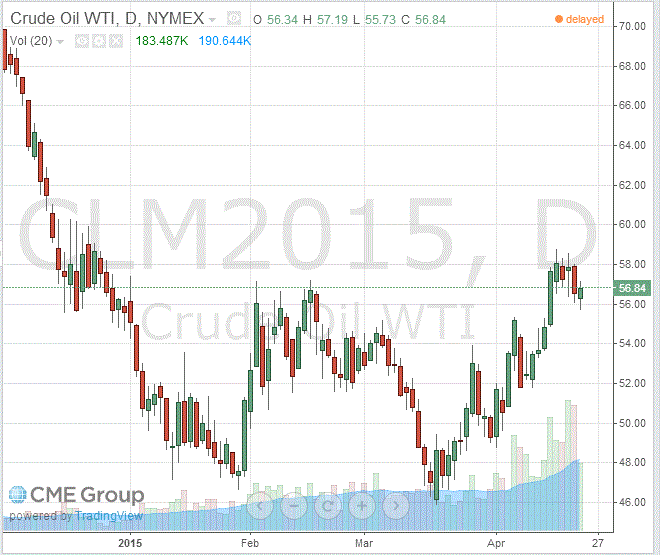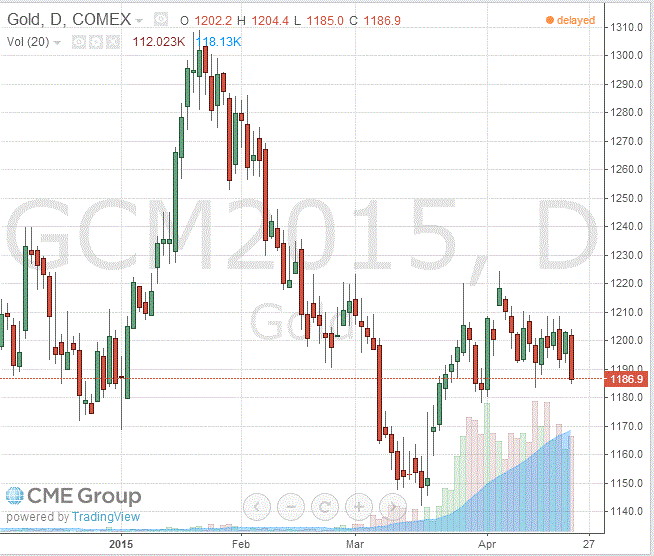Notícias do Mercado
-
23:33
Commodities. Daily history for Apr 22’2015:
(raw materials / closing price /% change)
Oil 56.16 -0.79%
Gold 1,187.10 +0.02%
-
16:41
Oil prices traded higher on lower U.S. oil production
Oil prices traded higher as the U.S. Energy Information Administration (EIA) reported that the U.S. oil production declined by 0.19% or by 18,000 barrels per day last week.
U.S. crude oil inventories increased by 5.3 million barrels last week. Stocks at the Cushing, Oklahoma climbed by 789,000 barrels, the EIA noted. Energy market data provider Genscape said tanks at Cushing were nearly 80% full.
Fights in Yemen which could lead to a disruption to oil supplies support oil prices, despite Saudi Arabia saying on Tuesday it was ending air strikes against the Iran-allied Houthi rebels.
WTI crude oil for June delivery rose to $56.84 a barrel on the New York Mercantile Exchange. Brent crude oil for June increased to $62.84 a barrel on ICE Futures Europe.
-
16:23
Gold price traded lower on a stronger U.S. dollar
Gold price traded lower on a stronger U.S. dollar. The greenback rose after the better-than-expected U.S. existing homes sales data. Sales of existing homes rose 6.1% to a seasonally adjusted annual rate of 5.19 million in March from 4.89 million in February. It was the highest level since September 2013.
The weaker-than-expected economic data from the Eurozone also supported the U.S. currency. Eurozone's consumer confidence index declined to -4.6 in April from -4.0 in March. Analysts had expected the index to climb to -3.0.
Investors were cautious due to the Greek debt crisis. Greece is still running out of cash, and it needs a new tranche of loans. The Greek government hopes to unlock a new tranche of loans (€7.2 billion) at the Eurogroup meeting on April 24. Some European officials expressed concerns that an agreement between Greece and its creditors will be signed this week.
The European Commission President Jean-Claude Juncker ruled out the Greek exit from the Eurozone.
June futures for gold on the COMEX today dropped to 1186.90 dollars per ounce.
-
14:20
China’s leading index climbs 0.2% in March
The Conference Board released its Leading Economic Index (LEI) for China on Wednesday. The index rose 0.2% in March, after a 1.4% increase in February. The rise was driven by increases in three of the six components.
The economist at The Conference Board Andrew Polk said that exports, consumer confidence, and real estate had a negative impact on the index.
-

